Introduction of Repairing a Burst Pipe
Important Point
Burst pipe, also known as pipe burst in house, means bursting of pipe in different circumstances as well as in different situations.
Understanding the pipe burst meaning is crucial for homeowners. Bursting of pipes results in severe damages in plumbing on a house as well as severe damages in overall house systems as well.
There are various reasons which can cause the bursting of a pipe, such as:
Due to severe expansion and contraction of pipes in the winter season(which is particularly detrimental whenever coating Is not provided in the outer crush of a pipe).
Direct contact of pipe in the surrounding soils. The presence of sulfur in the soils is particularly detrimental to the pipe.
Bursting of the pipe due to inadequate placing and leveling of the ground where the pipe is to be placed.
Repairing a Burst Pipe
Repairing a burst pipe essentially requires various shouldering equipment, apart from the fact it requires various manpower as well.
Just by adding a stop and waste valve, it can be ensured that the pipe does not freeze again.
Here are some materials which can be used to repair a burst pipe, they are:
- Mini-copper pipe cutter.
- Steel wool.
- Soldering paste.
- Lead-free solder.
- Torch kit.
- Good and branded half inch copper pipe.
- Half inch copper fittings.
- Stop & waste valve.
Also, read: Core Cutter Method | What is Compaction of Soil
Repair Procedure of Repairing a Burst Pipe
The steps of the repair process are as follows.
- Determine the location on the pipe where the pipe is busted or shows signs of bursting, such as signs of burst pipe under house. So, it is required to choose such an area where the pipe can be most detrimental due to the surrounding weather effects.
- After locating the area, the main valve is required to be shut off from where comes I the pipe thus comes in the house as well. Open the lowest fixture of the house to drain out any type of water.
- To remove the desired section of the pipe a pipe cutter is use. Until it cuts through around the pipe the pipe cutters rotate and gradually tightening. With steel wool cut end of the pipe and any burrs off clean. Place a bucket around the cut area to catch any water remaining in the line.
- Temporarily remove the peacock from the valve. It is required to take care of the point that the valve should be in the right direction.
- A Section of copper pipe is cut to form an appropriate length. It is to make sure that a little extra length is cut to make a good fit. Be sure that the new water pipe is the same diameter as the existing water pipe.
- Use steel wool to both of the pipe ends and inside the stop and waste valve.
- Spread Soldering flux to the outside of the water pipe and internal face of the water pipe ad well t ensures proper fitting on the existing water pipe. Slide the valve fitting into the end of the pipe.
- For safety reasons, wear safety goggles, use a propane torch to heat the fitting and the pipe where they can connect. just at the end of the pipe of the blue frame hold the edge, for best results.
- Push about 2 inches of the solder into the joint to enable proper jointing with the valve and the pipe. Into the connection as well allow it to seep and heat will melt the solder. Solder completely around the pipe valve connection. Practice Soldering techniques on scrap pieces of pipe and copper fittings before trying it on the valve.
- Replace the peacock, open the main water line to check for leaks. Before temperature dips below the freezing point shut off the valve and open any spigots that are downstream of the valve. Then remove the peacock screw to drain the pipe. If any sections of the drain pipe are in the unheated area, cover them with foam pipe insulation.
Also, read: What Is Cement | Types of Cement
Useful Article for You
- Why Does Mortar Crack When Drying
- Why Does Concrete Get Hot
- Why Do They Put Lines in Concrete
- Why Does Concrete Harden
- Why Do Tiles Pop Up
- Why Do They Call It the Golden Gate Bridge
- Why Does Concrete Spall
- Why Does My Microwave Smell Burnt
- Why Does My Truck Smell Like Rotten Eggs
- Why Do Stairs Creak
- Why Does Concrete Sweat
- Why Do Cinder Blocks Have Holes
- Why Does the Leaning Tower Lean
- Why Do You Need a Washer with a Nut
- Why Does Water Weigh So Much
- Why Do Bricks Have Holes
- Crack Repair Techniques
- Why Does My Sump Pump Run Constantly
- Why Do They Cut Squares in the Highway
- Why Don’t I Have Hot Water in My House
- Why Are Blocks Placed in Trenches
- Which of the Following Best Explains Why Buildings Tip During Earthquakes?
- Why Is There Gravel on Rooftops
- Lumber Definition Wood
Burst Pipe Repair Cost
The busted pipe repair cost can be quite high, including both labor and materials.
Due to the high cost of repair for a particular stretch of a burst pipe, it is very much recommended to control the flow and other parameters such that the pipe does not burst at all.
The rate of a plumber for fixing a burst pipe can be quite high as well starting from 85 dollars per hour.
So, it is very much recommended to properly maintain the level of the soil and soil properties to prevent the bursting of pipe.
Burst Heating Pipe
This is another very much detrimental defect in pipes, especially when you have a busted water pipe under house.
Maximum time it happens that due to submerged pipes, very severe heating can be produced which can be very much detrimental to the pipes.
Due to this very severe heating, pipes may burst unconditionally.
Burst heating of pipes can cause severe damages to the plumbing system of a house.
Why Do Pipes Burst?
The reason behind the bursting of any pipes, including water pipe burst in house, can be due to various reasons, some of them are:
- Due to the unexpected weather changes, such as severe heat in the afternoon time and cold in the wintertime, and where this type of difference can be higher the chances of pipes bursting can be high in such situations.
- Due to the detrimental properties of the soil of a particular area, such as the presence of Sulphur content and supplied content, chemicals change and corrosion may occur between the constituents of soil and pipe material. Due to such reactions, pipes may burst unconditionally in any Atmospheric condition.
- Due to the improper levelling and inadequate flow of water within the pipe, pipes may burst at a very fast rate. Thus, to prevent the bursting of a pipe, the surrounding soils must be levelled thoroughly to ensure proper placing of pipe.
Also, read: Piling for Foundation | Use of Pile Foundation | Characteristics of Pile Foundation
Fixing a Busted Water Pipe
There are have many steeps of fixing a busted water pipe that’s are below-
- At first, we have to determine the location on the pipe where the pipe is busted or shows signs of bursting, which could involve busted water pipe repair.
- So, it is required to choose such an area where the pipe can be most detrimental due to the surrounding weather effects.
- After locating the area, the main valve is required to be shut off from where comes I the pipe thus comes in the house as well. Open the lowest fixture of the house to drain any water out.
- Temporarily remove the peacock from the valve. It is required to take care of the point that the valve should be in the right direction.
- And then use a pipe cutter to remove the desired section of the pipe. Until it cuts through around the pipe,the pipe cutter is rotate and gradually tightening.
- After that clean any burrs off and end of the cut pipe with steel wool. Place a bucket around the cut area to catch any water remaining in the line.
- A Section of copper pipe is cut to form an appropriate length. It is to make sure that a little extra length is cut to make a good fit. Be sure that the new water pipe is the same diameter as the existing water pipe.
- Use steel wool to both of the pipe ends and inside the stop and waste valve.
- Spread Soldering flux to the outside of the water pipe and internal face of the water pipe ad well t ensures proper fitting on the existing water pipe.
- Slide the valve fitting into the end of the pipe.
- For safety reasons, wear safety goggles, use a propane torch to heat the fitting and the pipe where they can connect just at the end of the pipe of the blue frame hold the edge, for best results.
- Push about 2 inches of the solder into the joint to enable proper jointing with the valve and the pipe. Into the connection as well allow it to seep and heat will melt the Solder completely around the pipe valve connection. Practice Soldering techniques on scrap pieces of pipe and copper fittings before trying it on the valve.
- In this way, we can be fixing a busted water pipe of the houses.
Pipes Burst Under House
Many a time plumbing pipes may exist beneath the house, which is particularly beneath the slab. This is a common scenario for pipe burst under house.
Due to the pressure of the slab as well as the high pressure from the surrounding soils, a pipe may burst under the house.
The signs of pipe bursting may be seen in a building from the following examples:
- Water leakage in slabs: Whenever any bursting of pipe occurs, water leakage can be found in slabs as well. Signs and markings of water leakage can be heavily found in slabs.
- Higher moisture content in soils: Due to the bursting of pipes water may leak out from the pipes, which correspondingly increases the moisture content of the surrounding soil, which is also responsible for the failure of the entire plumbing system of the building.
- Wet areas of grass beside the house.
- Damp patches on the carpet.
- A musty odor in certain rooms.
- The sound of running or rushing water when all the taps are turned off.
- Warm spots on the floor.
- An unexpected increase in the water bill of a particular family based on its water consumption.
- Low water pressure.
- Rising damp on walls when there are no significant rains.
Whenever a pipe burst under the house occurs, there can be various methods to fix it, which also might be a little expensive.
Some of them are:
- Locating the position of the leak: At first, the location of the position of the leak is found out
- Then the best strategy for repair system is identified which is adopted in the house plumbing system for repairing the bursting pipe.
- While deciding the best strategy, the factors affecting the cost of the repair such as man materials are considered. The factors affecting the soil properties and characteristics are also considered while deciding the repair systems.
Also, read: Dynamic Vs Kinematic Viscosity (Difference & Definition)
Burst Water Pipes in Homes
When you understand a busted pipe under house, we have to find out the area from where water is leaked.
After locating the area, the main valve is required to be shut off from where comes I the pipe thus comes in the house as well.
Open the lowest fixture of the house to drain any water out.
Temporarily remove the peacock from the valve. It is required to take care of the point that the valve should be in the right direction. And then use a pipe cutter to remove the desired section of the pipe.
Until it cuts through around the pipe, the pipe cutter is rotate and gradually tightening.
After that clean any burrs off and end of the cut pipe with steel wool. Place a bucket around the cut area to catch any water remaining in the line.
For safety reasons, wear safety goggles, use a propane torch to heat the fitting and the pipe where they can connect.
Push about 2 inches of the solder into the joint to enable proper jointing with the valve and the pipe.
Into the connection as well allow it to seep and heat will melt the solder. Solder completely around the pipe valve connection.
Practice Soldering techniques on scrap pieces of pipe and copper fittings before trying it on the valve.
Useful Article for You
- Classification of Stone Work
- Stone Masonry vs Brick Masonry
- Cement Rate Today
- How to Get House for Free
- Top 10 Cement in India 2023
- Slab Reinforcement Calculation
- Steps for Construction of Building
- What Is Hempcrete
- How Long Does Thinset Take to Dry
- Floating Concrete Slab
- Zero Force Members
- How Much Does a Yard of Concrete Weigh
- Gradient Road
- Types of Vaulted Ceilings
- Pile-Cap
- Bond Breaker
- Budget Sunroom Ideas
- What Is Gypsum Board
- What Are Risers
- What Are Engineering Drawings
- Tributary Width
- Msand
Why Do Water Pipes Sometimes Burst in Winter?
The reasons behind the pipes bursting in winter can be mentioned in the following:
- In the winter season, the outer temperature of the atmosphere becomes very low, while the inside of the pipe, the temperature is high due to continuous flowing of water and due to friction, additional heat is produced as well.
- Thus, in the outer crush of the pipe due to low temperature there is a tendency of the pipe to contract itself.
- While in the inside of the pipe, there is a tendency of the pipe to expand itself.
- Thus, severe stress is formed at the crust of the pipes due to severe expansion and contraction.
- Thus, if necessary, measures are not taken, there is a high possibility of the bursting of the pipe. That is the main reason for the frequently bursting of water pipes in the winter season.
Also Read:Civil Engineering Software | List of Civil Engineering Software | List of Engineering Software
How to Fix a Burst Pipe?
There are have many processes to fix burst pipes, including busted water pipe repair, that’s are below.
- At first, we have to determine the location on the pipe where the pipe is busted or shows signs of bursting.
- So, it is required to choose such an area where the pipe can be most detrimental due to the surrounding weather effects.
- After locating the area, the main valve is required to be shut off from where comes I the pipe thus comes in the house as well. Open the lowest fixture of the house to drain any water out.
- Clean any burrs off and end of the cut pipe with steel wool. Place a bucket around the cut area to catch any water remaining in the line.
- Temporarily remove the peacock from the valve. It is required to take care of the point that the valve should be in the right direction. A Section of copper pipe is cut to form an appropriate length. It is to make sure that a little extra length is cut to make a good fit. Be sure that the new water pipe is the same diameter as the existing water pipe.
- Use steel wool to both of the pipe ends and inside the stop and waste valve.
- Spread Soldering flux to the outside o the water pipe and internal face of the water pipe ad well t ensures proper fitting on the existing water pipe.
- Slide the valve fitting into the end of the pipe.
- For safety reasons, wear safety goggles, use a propane torch to heat the fitting and the pipe where they can connect.
- For best results, hold the edge of the blue frame just at the end of the pipe.
- The heat will melt the solder and allow it to seep into the connection as well. Solder completely around the pipe valve connection.
- Practice Soldering techniques on scrap pieces of pipe and copper fittings before trying it on the valve.
- Use the same Soldering technique to install the new assembly to the existing water line.
- Depending on the installation, it may be necessary to use the copper fittings to connect the new sections of pipe to the existing water line. These copper fittings are widely available in different configurations and diameters.
- Replace the peacock, open the main water line to check for leaks. Before temperature dips below the freezing point shut off the valve and open any spigots that are downstream of the valve.
- Then remove the peacock screw to drain the pipe. If any sections of the drain pipe are in the unheated area, cover them with foam pipe insulation.
By following the above steps, we can fix a burst pipe easily.
Burst Pipe
Burst pipes need to be immediately shut off at the source in order to mitigate further water damage. A burst pipe can occur due to a variety of factors, including rats, tree roots, corrosion, or a collapsed pipe. When a pipe ruptures, it bursts water forth to the surrounding surfaces and areas.
Burst Water Pipe
The first thing you need to do when you find a burst pipe is shut off your water. … Once the water has been shut off, you should open your faucets to drain the remaining cold water in your pipes. This will relieve pressure in your pipe system and can help prevent additional areas from freezing.
Burst Heating Pipe
If your pipe burst or froze from cold weather, let some warm air in. After draining the remaining water from your taps, you might want to turn the heat back on and hike up thermostat, or simply train a hair dryer on the pipe in question.
Burst Water Pipes in Home
- Turn off main. Before anything else, turn off the water supply.
- Call a plumber. Next, call a plumber.
- Drain faucets.
- Let in warm air.
- Keep doors open.
- Repair sleeve.
- Rubber, wood piece, and clamp.
- Clean the water. Clear away any water quickly to avoid excess water damage.
Water Pipe Busted in House
The first thing you need to do when you find a burst pipe is shut off your water. This will relieve pressure in your pipe system and can help prevent additional areas from freezing. Then, flush all the toilets in the house. Once water is no longer running from the taps, any leaks should stop.
Burst Water Pipe near Me
Look at exposed pipes near the walls in your basement or crawlspace. Corrosion or moisture on or around these pipes indicates a leak nearby. If there is mold, mildew or rotted wood near the pipe, the broken pipe is likely behind the wall next to or above this location.
Kitchen Pipe Burst
What causes a burst pipe in the kitchen? If pipes and fittings aren’t secured, fluctuating water pressure causes them to move, and that weakens joints. Corrosion buildup inside a pipe can narrow the water flow and result in damaging pressure. Winter temperatures can cause pipes to freeze and burst.
Hot Water Pipe Burst
First thing, turn off the water flow when you suspect a pipe has broken, even if you don’t know where the water’s coming from. Shut off the hot water heater. Once the hot water system is off, go back to each faucet and run the hot water to drain that supply. When there is no more running tap water, the leak will stop.
A Pipe Burst
Pipe bursting is a trenchless method of replacing buried pipelines (such as sewer, water, or natural gas pipes) without the need for a traditional construction trench. “launching and receiving pits” replace the trench needed by conventional pipe-laying.
Pipe Burst Under Kitchen Sink
For a temporary fix, dig out an old garden hose. Cut a piece 10 inches longer than the pipe’s rupture, and slice it in half lengthwise. Secure it around the burst pipe with hose clamps at each end and over the pipe break. This low-tech fix will hold most leaks until you can make permanent repairs or call a plumber.
Like this post? Share it with your friends!
Suggested Read –
- What Is Workability
- Cracking Moment | Cracking of Concrete | Types of Cracks in Concrete | Calculating of Cracking Moment for Hollow Rectangular Beam
- Specific Gravity Test of Bitumen | Procedure of Specific Gravity Test of Bitumen | Result of Specific Gravity Test of Bitumen
- Difference Between Flexible Pavement and Rigid Pavement | What is Pavement | Types of Pavement
- Top 10 Tiles Companies in India 2021
- Top 10 Construction Companies in India
- Top 10 Best Cement Companies In India 2021
- What Is Plinth | What Is Plinth Protection | Purpose of Plinth Protection
- What Is Rat Trap Bond | How to Use | Advantage & Disadvantage of Rat Trap Bond
Originally posted 2023-09-22 12:15:29.

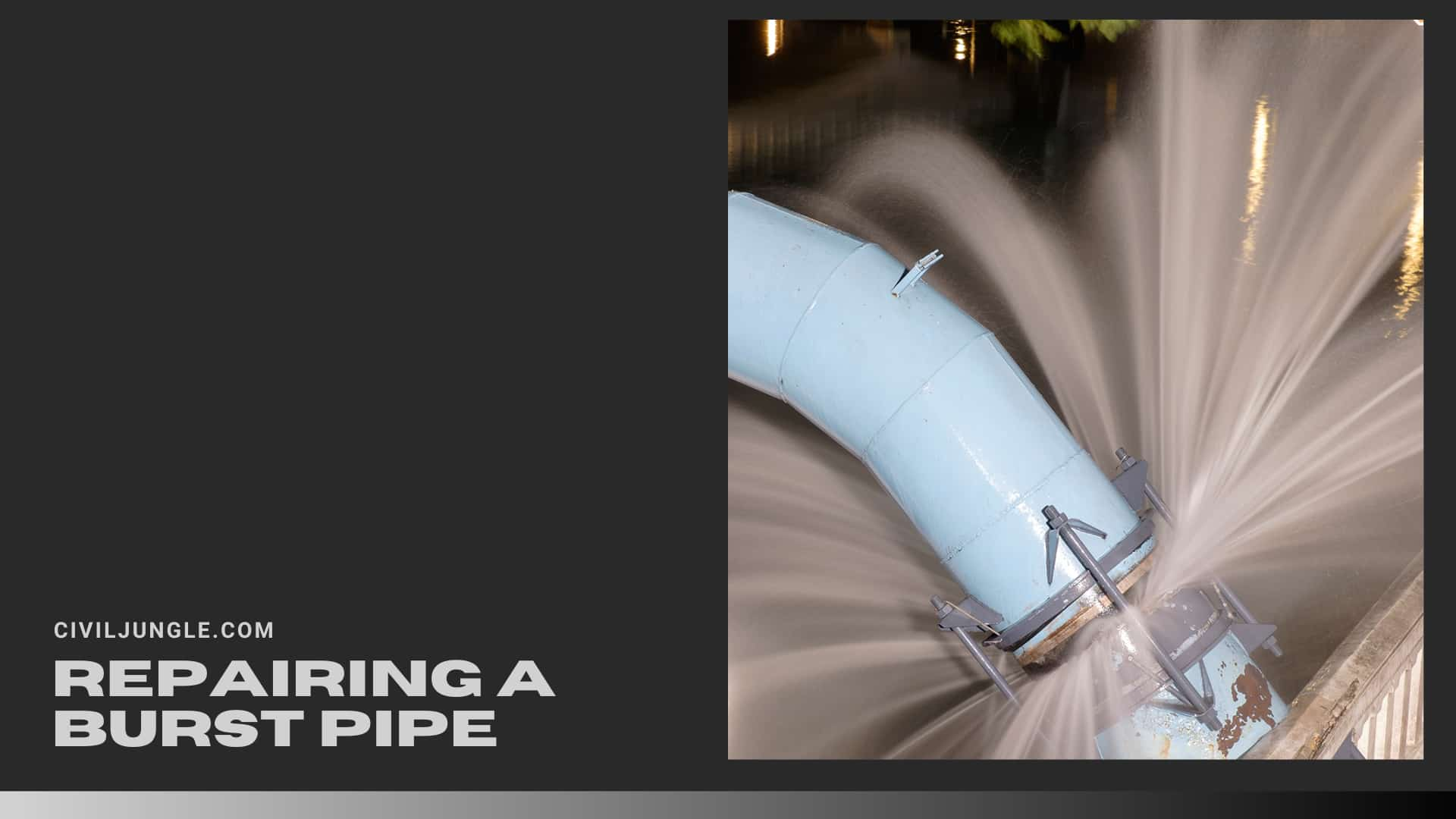
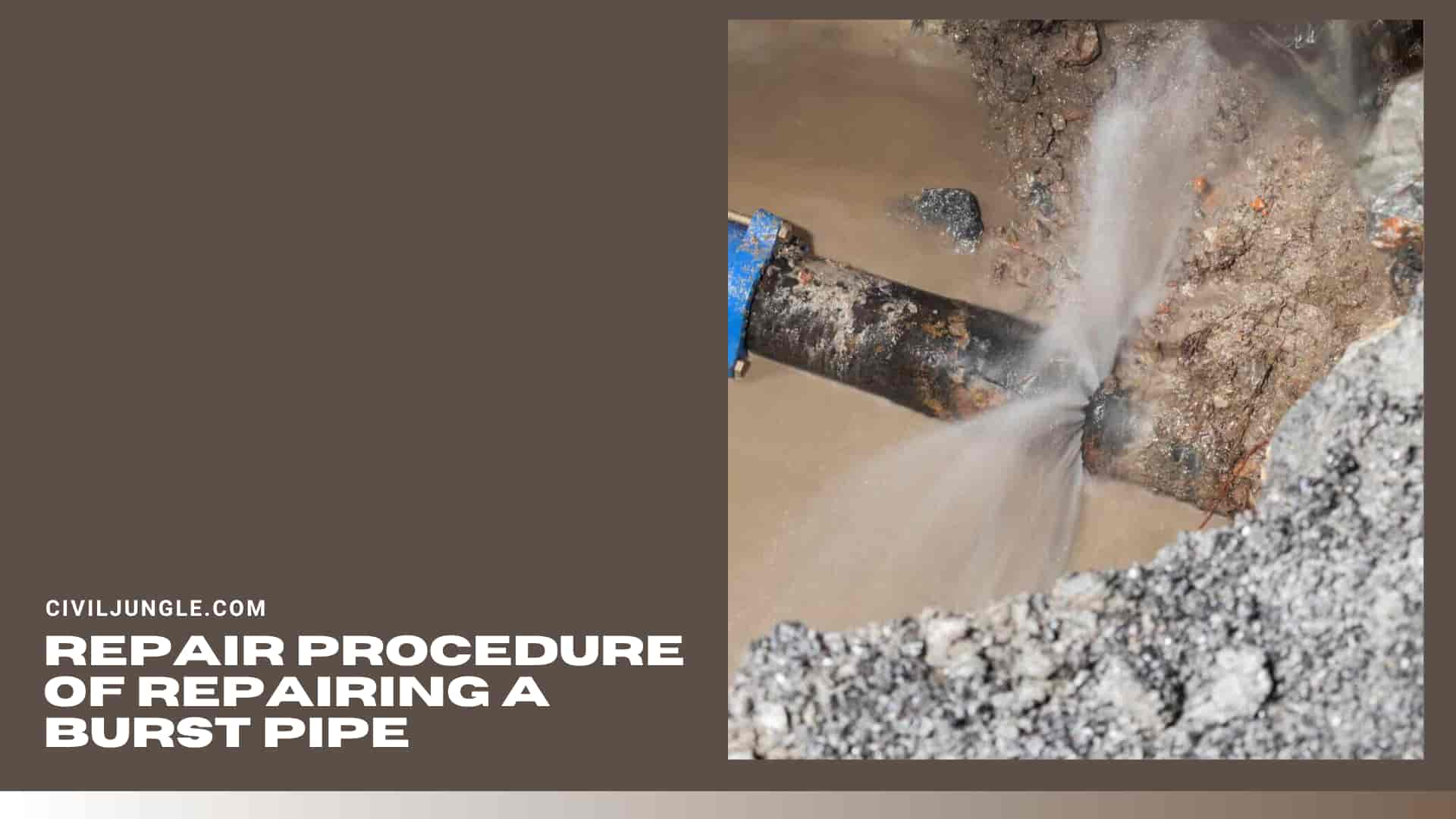
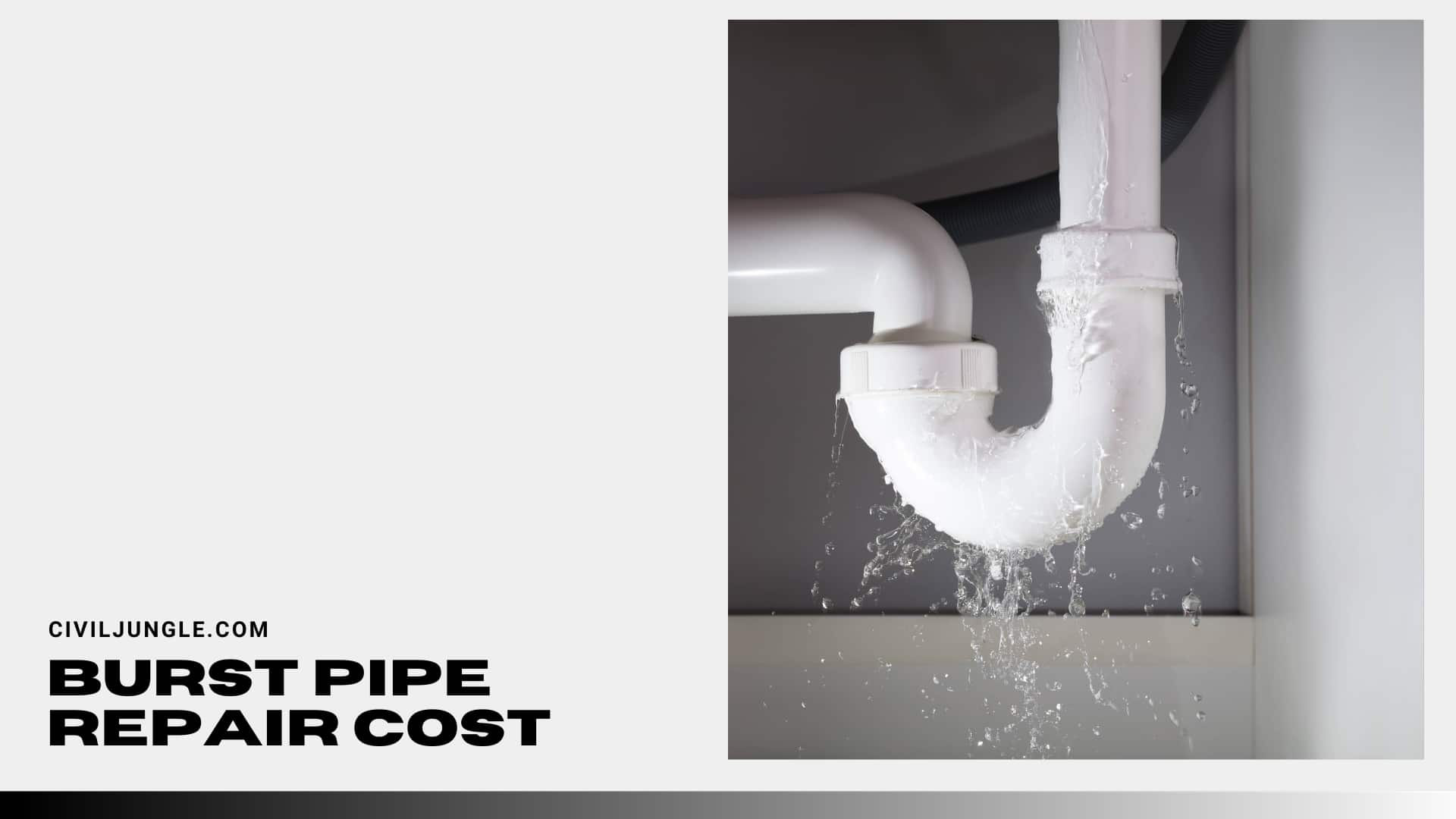
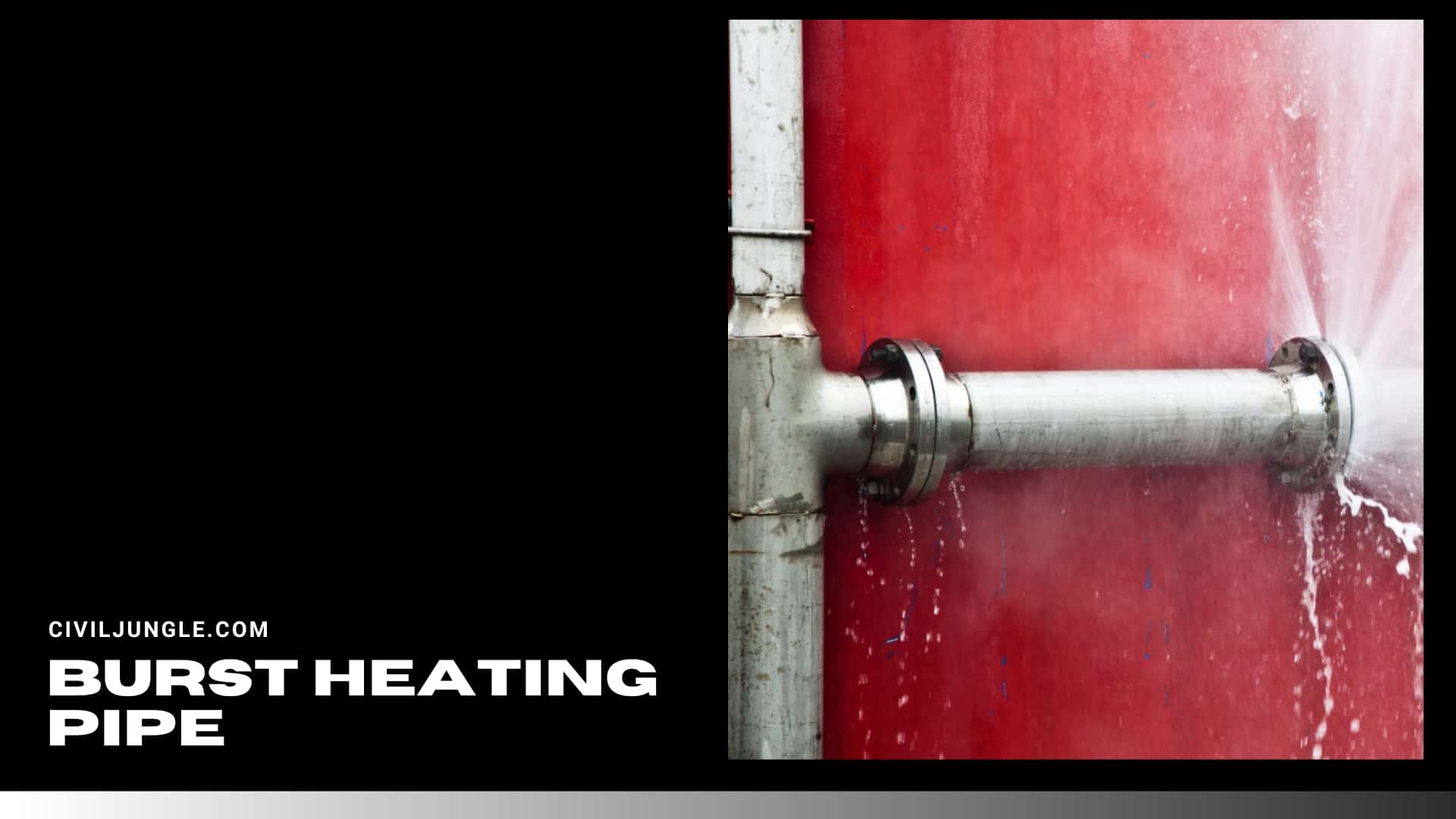
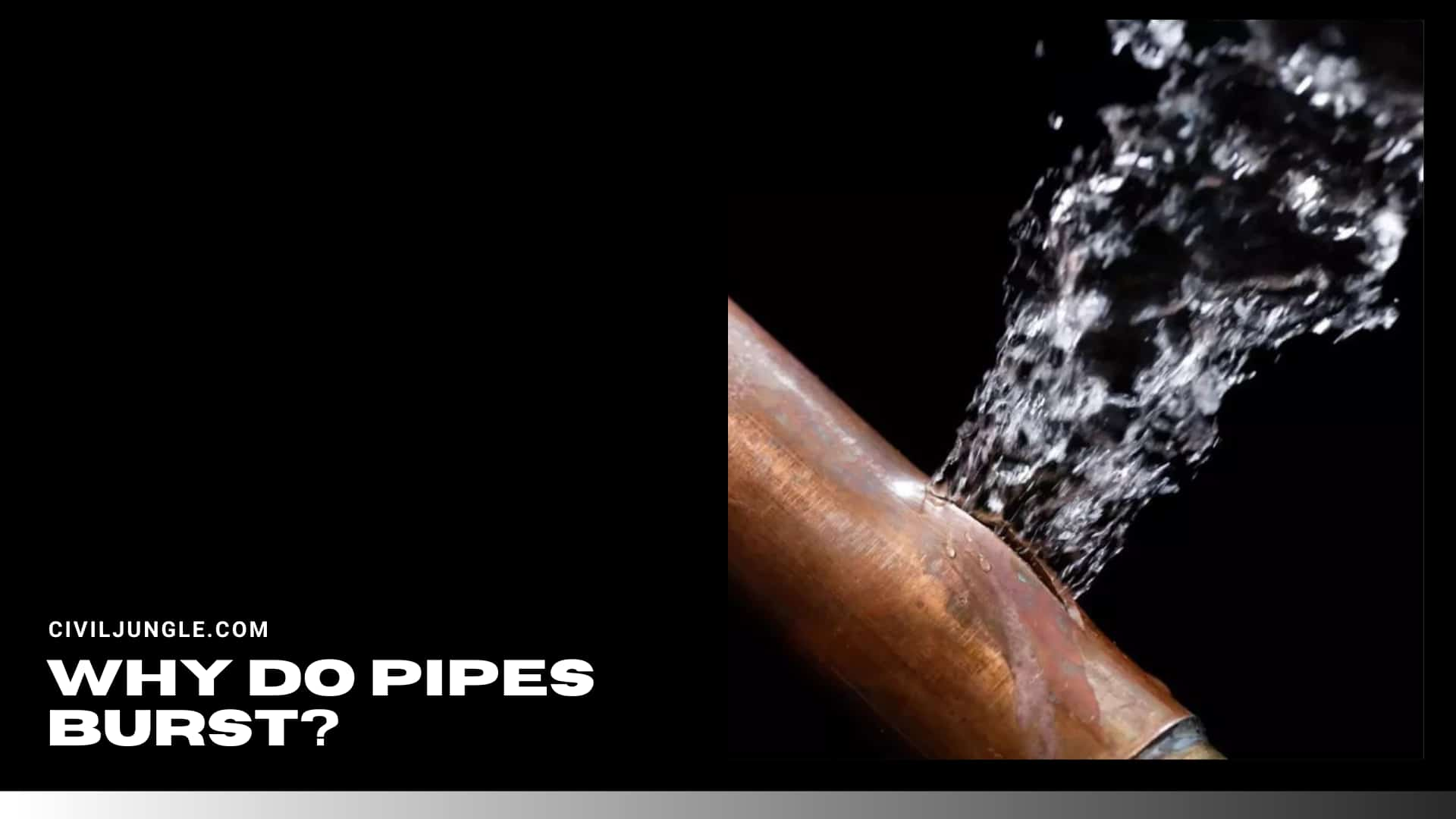
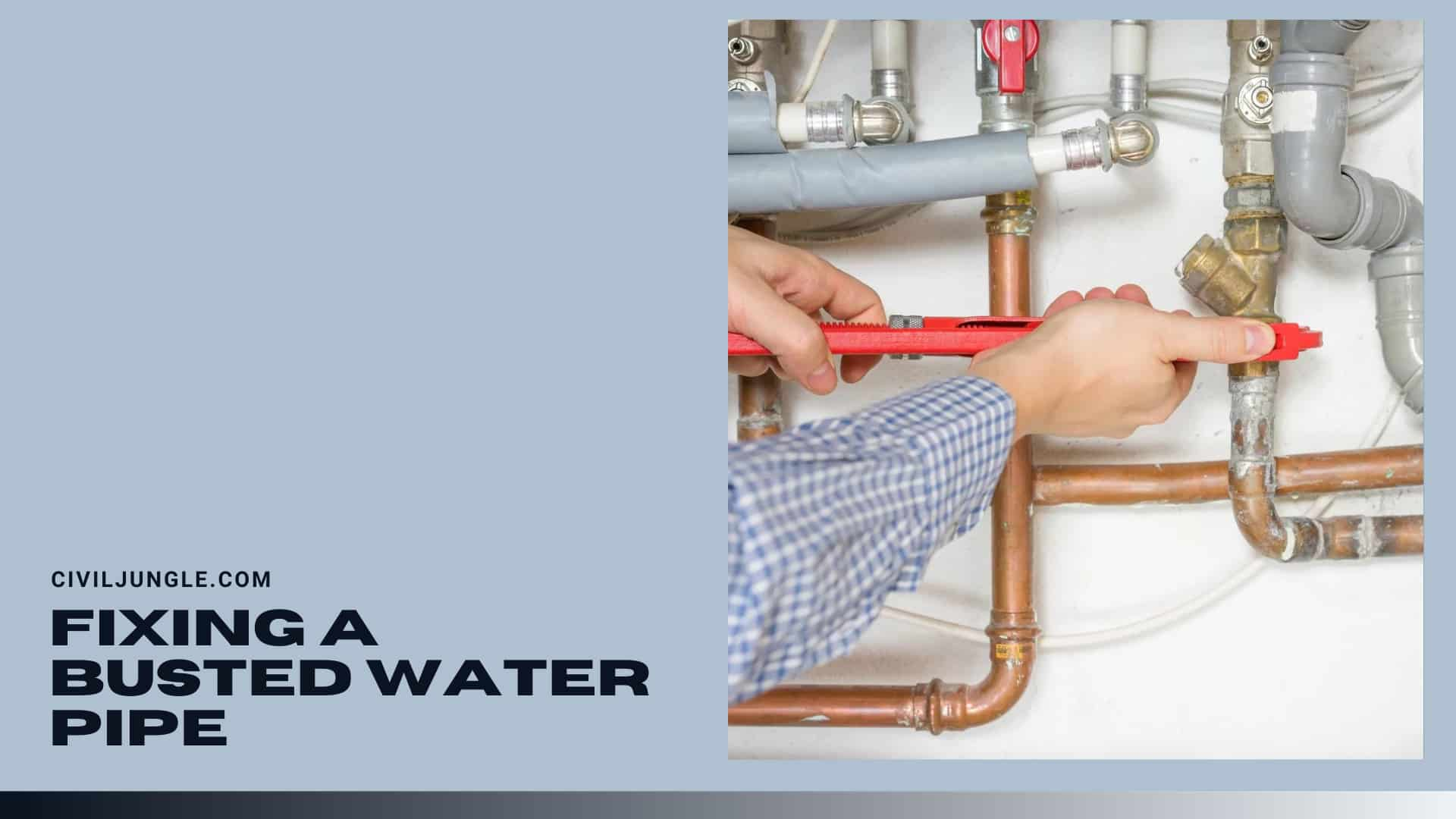
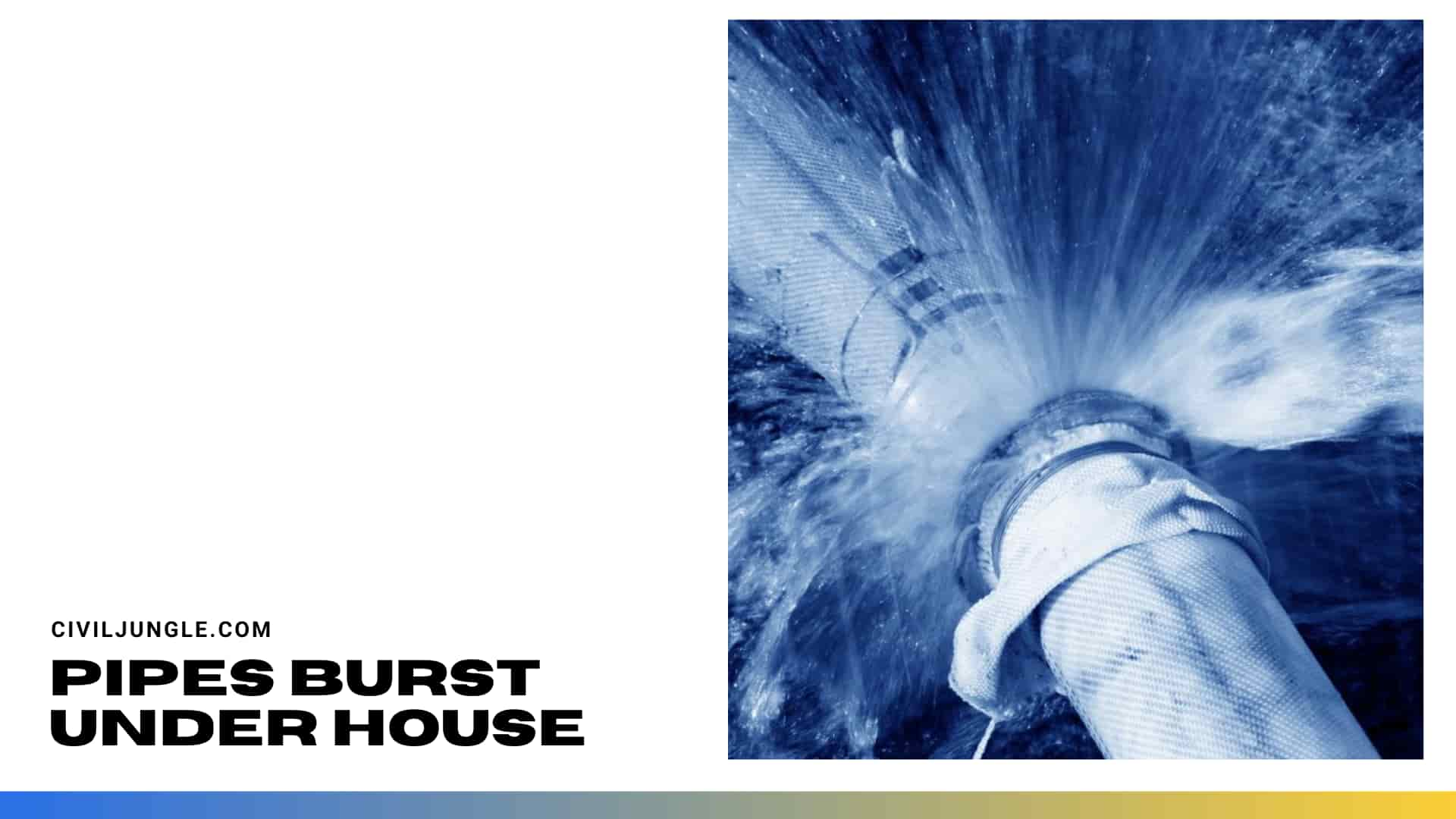
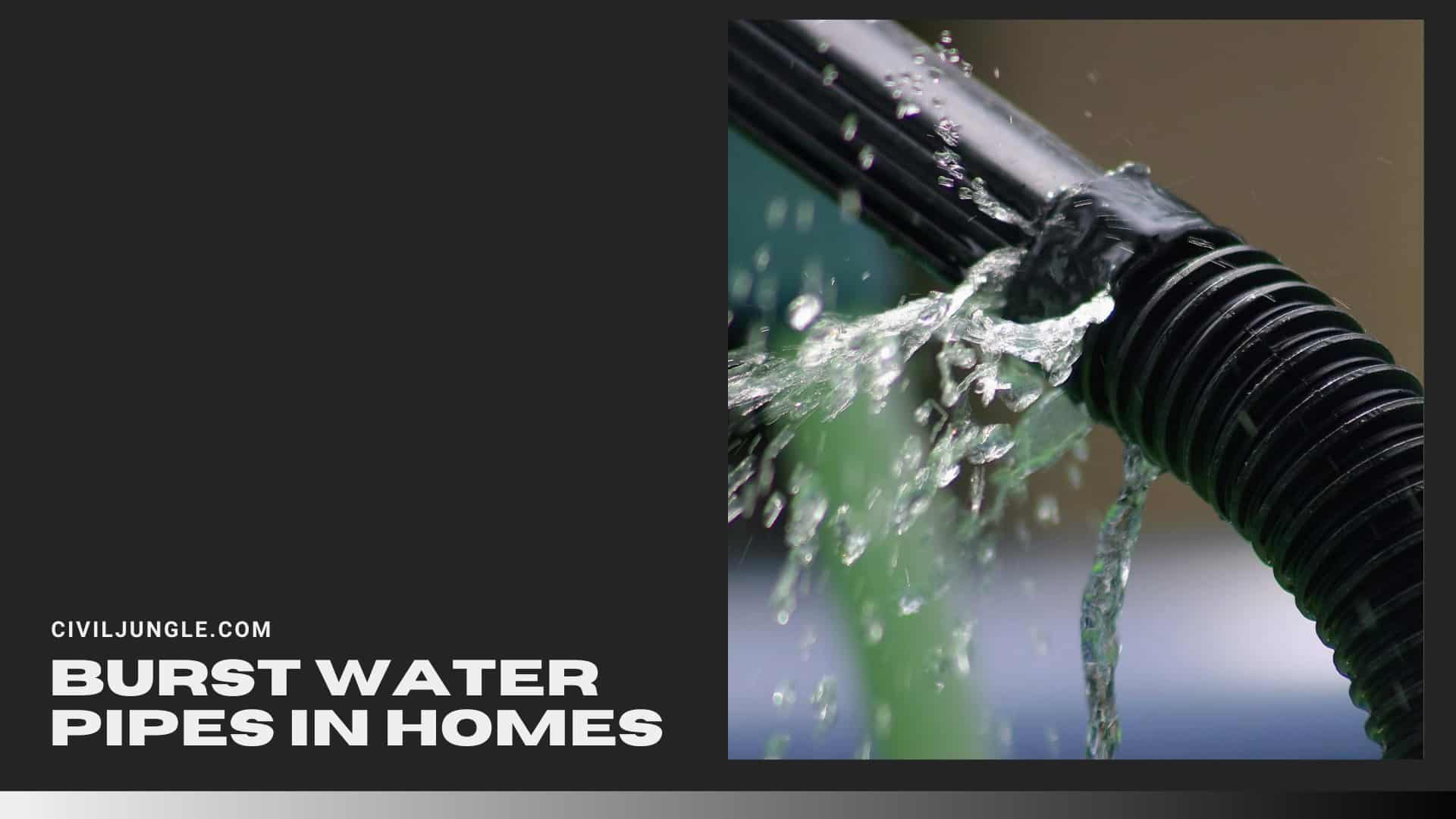
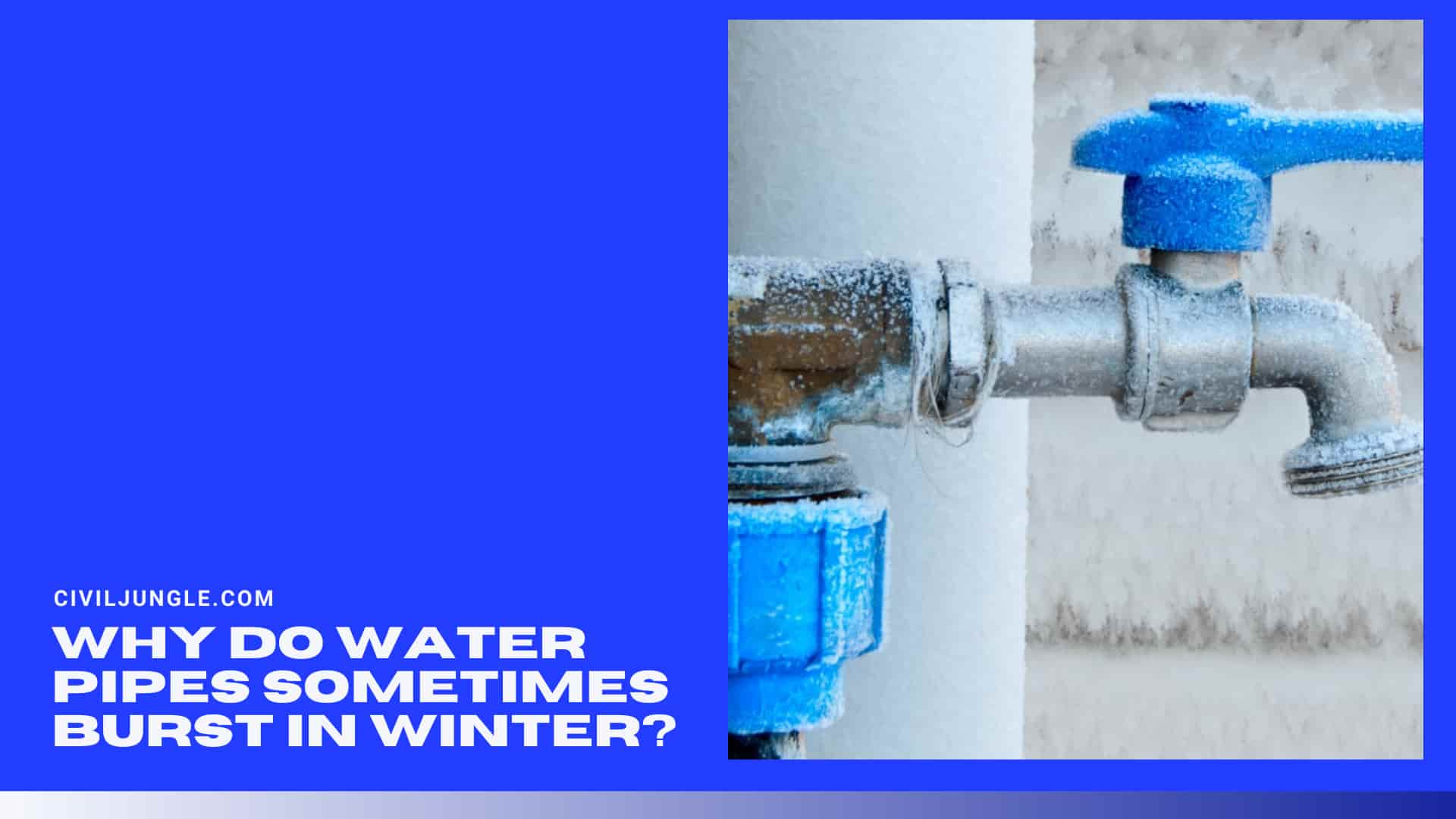
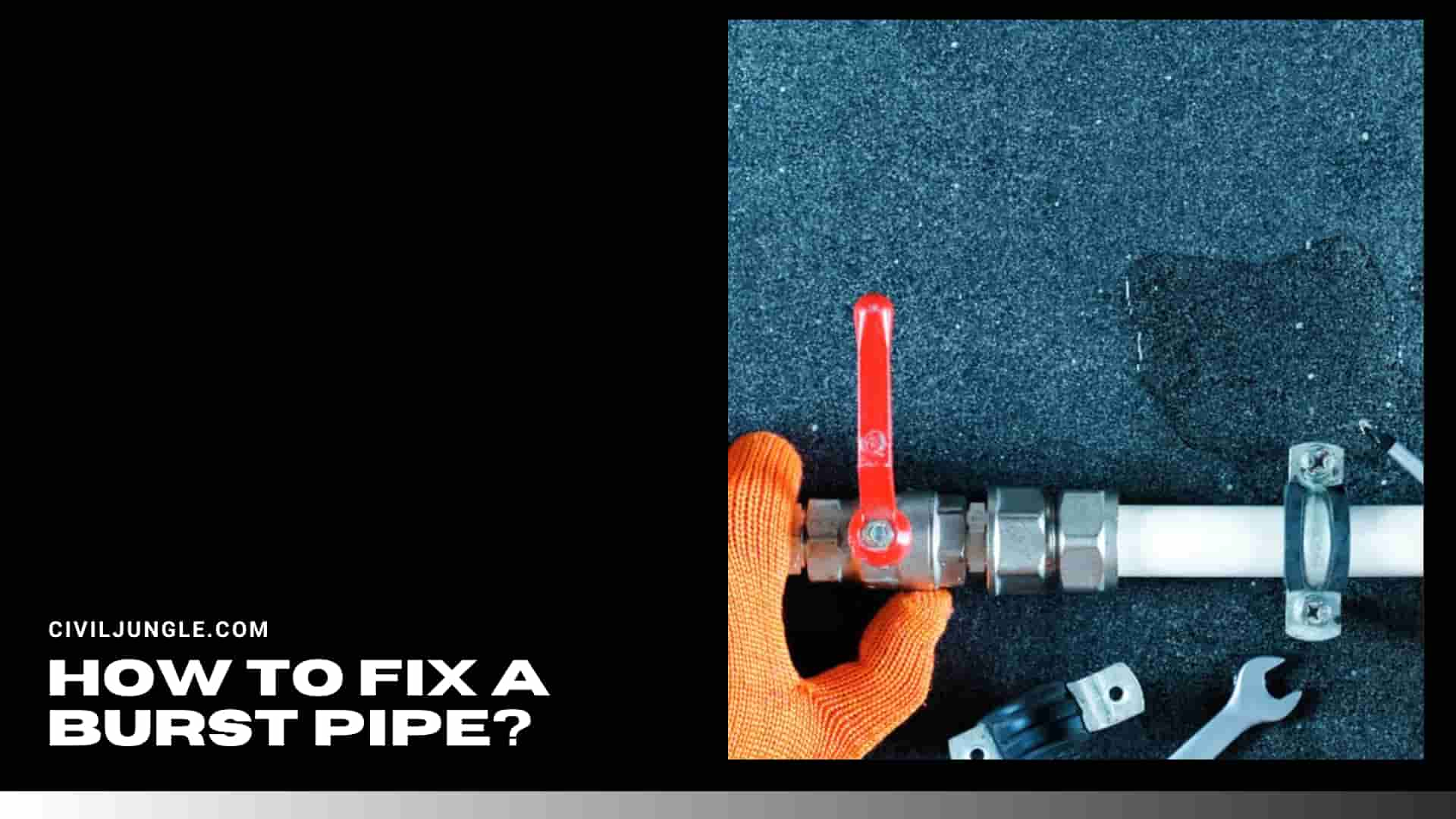

Leave a Reply